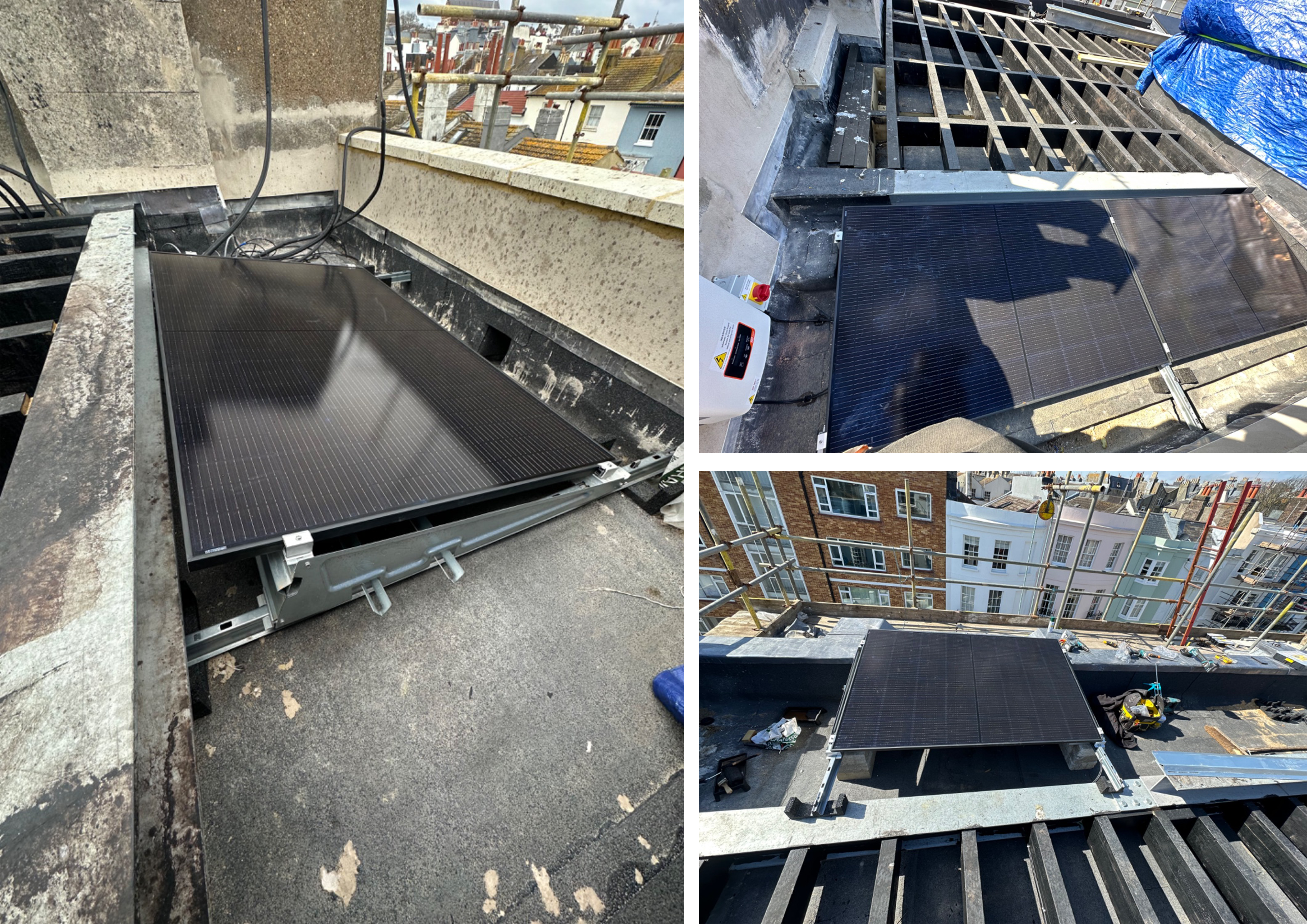Guest Blog – OHM Energy
In our occasional series of guest bloggers, here we have invited sustainable experts OHM Energy with whom we are currently on site with at Norfolk Road.
The bright shine of solar
After running a successful solar business in Spain, renewable energy pioneer Jason Lindfield returned to a comparatively underdeveloped UK market in 2011 and launched OHM Energy. Over the last thirteen years, OHM Energy has grown to two companies – OHM Energy for residential renewable energy projects and OHM Energy Solutions for commercial clients. Our leadership has positioned OHM Energy as a top award-winning renewable energy company, and our values drive everything we do – educating our team, customers and policy-makers to ensure that we build a more sustainable society.
Working with Shape Architecture
When Shape Architecture asked us to design and install a solar system to power a project in Hove, their innovative yet commercial approach to sustainability was impressive.
Obtaining planning permission for a roof terrace and two large first-floor rear extensions adjacent to a listed building in a conservation area is a challenge. Yet the innovation, sensitivity and expertise of Shape ensured that permission was swiftly granted by Brighton and Hove council to the Norfolk Road property.
The benefits of solar
Solar PV panels were selected as the most suitable low-carbon heating option because of the environmental and economic benefits of the technology.
Unlike finite fossil fuels, solar energy is a clean, sustainable resource, and helps to reduce greenhouse gas emissions and combat climate change. Due to its efficiency and flexibility, solar is the fastest-growing renewable energy technology not only in the UK, but world-wide. Solar arrays can vary in size from a few rooftop PV panels to utility-scale free-standing arrays. Fast to install and easy to maintain, it is easy to see why the UK is enjoying a “rooftop revolution”.
Generating solar power reduces the amount of electricity a homeowner needs to buy from the utility company and lessens the impact of rising energy prices. Taking into account the cost of installing solar and potential savings, the average return on investment is 5-12 years.
The advantage of battery storage
If solar is coupled with battery storage technology, a household can often be independent of the grid, depending on energy consumption. Our Directors sit on the MCS national steering group testing and piloting cutting edge battery technology. With all models, there is the possibility for homeowners to make money by selling surplus solar power back to the grid via Ofgen’s Smart Export Guarantee (SEG).
Is solar mandatory for renovations?
Under the current planning regime, there is no mandatory requirement for new or existing homes to have solar panels, however, solar may become mandatory for new developments by 2025. Legislation is being introduced for residential and commercial property owners to encourage the transition to a net zero economy by 2050.
Where is solar mandatory?
The EU has already made solar panels on new builds a requirement. Scotland also introduced rules around carbon reduction in new homes back in 2016 and this legislation has been a game-changer for solar in Scotland. In 2016, around 10% of new builds had solar panels, but last year this figure was 70%. There’s no reason why this shouldn’t be the same when the rules change in England.
Why install solar for an extension?
Architects like Shape often select solar to meet the required SAP (Standard Assessment Procedure) score for energy efficiency in new and existing homes. By incorporating solar panels into the design, the property’s energy performance is enhanced and helps the eco-conscious resident looking to save time, effort and the expense of buying solar panels.
What is a SAP score?
Introduced by the UK government in 1992, a SAP score is a calculation of a building’s energy cost performance using criteria like insulation, heating, lighting, and renewable energy sources. Each building’s SAP score is also used to determine its Energy Performance Certificate (EPC) rating.
Minimum Energy Efficiency Standards (MEES)
MEES regulations were introduced by the government to improve the energy efficiency of privately rented homes, and accelerate decarbonisation across the UK.
Landlords and property agents are encouraged to act by commissioning an up-to-date Energy Performance Certificate (EPC) which will identify the current rating (which may have changed over time), and recommend opportunities for improvement.
Since 1st April 2020, landlords can no longer let or continue to let properties covered by the MEES Regulations if they have an EPC rating below E unless they have a valid exemption in place.
Landlords could face financial penalties of up to £5,000 for not meeting the minimum standards.
The government has also proposed that this standard be raised to EPC rating C for new tenancies by 2025 and for all tenancies by 2028. This is yet to be confirmed, however, we advise all landlords and homeowners to make energy efficiency measures to reach a C rating in preparation for legislation changes.
How to improve an EPC rating
According to the Energy Saving Trust, the nine most popular ways to improve an EPC rating are;
- Switch your lighting to LED
- Insulate your hot water cylinder
- Install heating controls
- Replace the boiler with a new condensing boiler
- Replace single-glazed windows with double glazing
- Install or upgrade your loft insulation
- Insulate your floor
- Install wall insulation
- Install solar panels
Energy compliance can be complex and it can be difficult to stay updated with changing requirements. Our team of advisors are on hand to explain how you can be compliant with current laws and be prepared for future energy legislation. Don’t get caught out. Contact our expert team here



